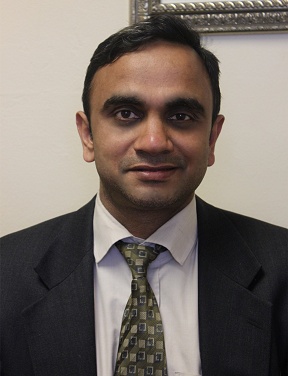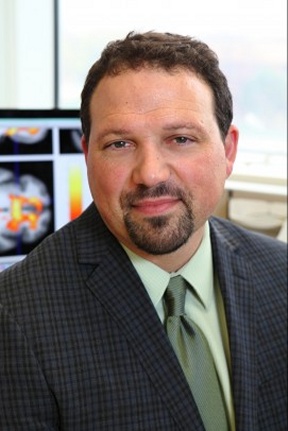By: Ashmar Mandou
With mental illness affecting nearly 80 percent of the population, according to Journal of Abnormal Psychology, it’s a conservation worth having with loved ones or medical professional. As Mental Health Awareness Month draws to a close we spoke to medical professionals who shared their insight on propelling the conversation in a positive direction.
Sandeep Mellacheruvu, Director of Behavioral Health at Loretto Hospital
 Lawndale Bilingual Newspaper: In the most basic form, what exactly is a Mental Illness?
Lawndale Bilingual Newspaper: In the most basic form, what exactly is a Mental Illness?
When you look at the definition of mental health, it is the foundation of an individual’s ability to think, communicate, learn, one’s resilience to life stresses, and even a person’s self-esteem. Mental health is very important to maintaining sound relationships, and for our personal and emotional well-being. Sound mental health also provides a way for us contribute to our community and in the society in which we live. So when a person is faced with a mental health challenge, it involves changes to that person’s thinking, their emotions, their behavior or how they respond and react, and sometimes a combination of all of these in some cases. Mental illnesses can sometimes be associated with an individual’s distress or the person’s ability to function in a social, professional setting or at family activities.
But it is important to realize that mental illness is common, and more prevalent that you think. If you look at the statistics recorded by the National Association of Mental Illness (NAMI), about 1 in 5 adults experiences a mental health condition every year. One in 17 lives with a serious mental illness such as schizophrenia or bipolar disorder. But as the person who is suffering from in their mental health is experiencing difficulty, their family, friends and communities in which they live are also affected.
Mental Illnesses affect nearly 20 percent of the adult population, 46 percent of teenagers, and 13 percent of children each year from anxiety, to bullying, to PTSD, to dementia, and suicide to name a few. What can someone do to help advocate for those suffering from mental illness?
With a mental illness, you cannot see it. Quite often, we assume something other than a mental health disorder as a possibility for the peculiar behavior. You have to pay attention. Often times the signs are there, but again, people choose to ignore them for various reasons. Some of the most noticeable signs include: confused thinking; a lengthy bout of depression (sadness or irritability); feelings of extreme highs or extreme lows; excessive fears, worries and anxieties; social withdrawal; dramatic changes in eating or sleeping habits; strong feelings of anger; strange thoughts (delusions); seeing or hearing things that aren’t there (hallucinations); growing inability to cope with daily problems and activities; suicidal thoughts; numerous unexplained physical ailments; or even substance use. In younger children, you may see changes in school performance, poor grades despite strong efforts, hyperactivity, unexplained aggression or temper tantrums.
So if someone you know is presenting these symptoms, try to get them to a mental health professional. If they are showing no signs of imminent danger to themselves or others, it is a good idea to start with a psychologist for an in-depth evaluation. A psychologist will work to observe the patient very closely to thoroughly assess them for consistent behavioral patterns. If a higher level of care is needed, then the patient will be referred to a psychiatrist for further assessment. The important thing to remember is to not ignore any unfamiliar behavior, or changes in attitude or emotions. Again, as with any untreated disease, a mental illness requires immediate professional help for the best health outcomes.
What are some of the myths that affect people with mental illness?
One common myth about mental health problems is that only certain people are affected by it. When in fact, anyone can be affected by a mental illness – both young and old. When you think about major depression, which can also categorize as a mental health problem, about 1 in 10 Americans suffer from it. With regard to children, even young kids can show early signs of mental health issues as well that can be the result of the child’s biological, psychological or social environment. Also, over half of the all mental health disorders can sometimes show up in children as early as 14 years old. But most often, they are undiagnosed as actual mental health problems.
But I think one of the most widespread myths is that people with mental health disorders are violent and unpredictable. But in fact, majority of people with a mental health disorder are not violent. Less than 5 percent of all violent acts can be attributed to individuals with mental illnesses. The other fact that I would like to mention is that most of the violent acts we see in society are against people with mental illnesses. They are the true victims, often incarcerated at higher rates when they should receive higher levels of mental health care. The real fact that should be publicized is individuals with mental illnesses thrive well in society with the proper health care and treatment.
Are their preventative measures one can do when dealing with mental, emotional and/or behavioral disorders?
Let me first say that mental illness is treatable. The vast majority of individuals who are diagnosed with a mental illness can have a normal life with proper treatment. Sometimes treatment involves the use of medication along with therapy, and in some cases therapy is enough. However, if someone is diagnosed with a mental illness, it should not be ignored. As with any diseases in the human body, if left untreated, the disease can cause great damage and get worse over time. So it is best to seek the help of a mental health professional immediately.
As Mental Health Awareness Month draws to a close, what would you like people to be cognizant of when dealing with their own mental health?
Prevention is better than cure. It is important to be proactive in addressing our mental health as a daily routine and being self-aware of internal feelings. Being self-aware is by looking inwards. By asking ourselves: How do I feel about myself? Who am I? Who do I want to be? And what do I want to be? One has to observe healthy hygiene, exercise regularly, eat healthy, and get adequate sleep. Regular practice of Yoga and meditation has also been very helpful in keeping the mind and body healthy. Once they observe subjective symptoms of anxiety, depression, poor performance in the job, and increasing interpersonal conflicts it is important seek professional help from counselors or therapists and or psychiatrists. There are many self-help groups who are experiencing similar symptoms where meetings are moderated by volunteers who have successfully addressed their issues and offer help to those who are in need.
For information about The Loretto Hospital’s Behavioral Health Services, visit their website at www.lorettohospital.org/our-services/behavioral-health-services
Dr. Shastri Swaminathan, Chair of the Department of Psychiatry at Advocate Illinois Masonic Medical Center in Chicago.
 In the most basic form, what exactly is a Mental Illness?
In the most basic form, what exactly is a Mental Illness?
Mental health can include conditions that affect our thinking, emotion, behavior, or some combination of the three.
Mental Illnesses affect nearly 20 percent of the adult population, 46 percent of teenagers, and 13 percent of children each year from anxiety, to bullying, to PTSD, to dementia, and suicide to name a few. What can someone do to help advocate for those suffering from mental illness?
Advocating for those who suffer from mental illness should be an imperative for all of us, in part because we are affected by it, but also because those who suffer from them – especially the more severe illnesses – cannot always speak for themselves. It is believed that the biggest barrier for people when it comes to accessing care is the stigma against mental illness. It is most helpful to the cause when we speak against stigma in any forum possible, such as schools and churches. There are also local and national advocacy groups such as NAMI (National Alliance on Mental Illness) and the Kennedy Forum in which we can participate.
What are some of the myths that affect people with mental illness?
The most harmful myth about mental illness is that it is a character flaw, an emotional weakness that causes people to become mentally ill and can just be “willed away.” Some other myths relate to the misconception these are “emotional” and not medical illnesses, and therefore do not need medical intervention. Research has shown that depression, anxiety and schizophrenia are as medical as diabetes or hypertension and require the same level of coverage throughout our health care system. Another terrible myth is that substance use disorders, such as addictions, are simply “lifestyle choices.” Ideas such as these can prevent folks from getting the care they need.
Are there preventative measures one can do when dealing with mental, emotional and/or behavioral disorders?
Although prevention of mental illness is more complex than just giving a vaccine, the idea is similar. Increasing resilience in children and adolescents through parenting and early intervention programs for children at high risk really do work. Equally critical are early detection and prompt treatment of depression and anxiety, which is aided by eliminating the negative stigma surrounding these illnesses and encouraging access to care both at home and in the workplace. Prevention also means reducing disability, enhancing rehabilitation and preventing relapses through all the means we have available.
As Mental Health Awareness Month draws to a close, what would you like people to be cognizant of when dealing with their own mental health?
During this month of Mental Health Awareness, it is important to keep in mind the essentials of sound mental health, including valuing oneself, investing in exercise, reaching out to people and staying connected with your community.
Dr. Scott Langenecker, Associate Director of the UI Center on Depression and Resilience at the University of Illinois at Chicago
 In the most basic form, what exactly is a Mental Illness?
In the most basic form, what exactly is a Mental Illness?
Mental illnesses are the result of the interaction of brain vulnerabilities in thinking and emotion as they interact with adverse experiences. Mental illness are brain illnesses that are broken into concerns with externalizing behaviors that are in excess, like substance abuse, mania, aggression, compared to internalizing thoughts and emotions like anxiety, worry, depression, obsessions. For many, mental illness can result interfere with functioning in social, educational, and occupational arenas.
Mental Illnesses affect nearly 20 percent of the adult population, 46 percent of teenagers, and 13 percent of children each year from anxiety, to bullying, to PTSD, to dementia, and suicide to name a few. What can someone do to help advocate for those suffering from mental illness?
The main thing we can do is advocate. Speak up. Ask for help in fighting against child abuse, bullying, sex abuse and harassment. Imagine how we would advocate for someone with cancer, or diabetes, in relation to access to care, insurance coverage.
What are some of the myths that affect people with mental illness?
The primary myth about mental illness is that it is something that the person should just snap out of, or just get over it. The myth is that only weak people or stupid people can have these brain illnesses. This myth contributes to stigma, where over half of people with brain illnesses affecting mental health do not talk about it, do not seek treatment. There is a myth that successful people have no reason to become depressed, or anxious, or to have a substance abuse problem. The reality is that everyone knows someone who has a mental illness, and these people are not weak, or broken, or unsuccessful.
Are there preventative measures one can do when dealing with mental, emotional and/or behavioral disorders?
Yes, early identification of the risk factors for mental illnesses can be key. People often have trouble coping, or with interpersonal relationships, or with school, before they meet all of the criteria for mental illnesses. Asking people if they are OK when things are tough. Getting preventative interventions for coping with stress, like exercise, yoga, diet, social groups, can make a huge difference.
As Mental Health Awareness Month draws to a close, what would you like people to be cognizant of when dealing with their own mental health?
Mental health is not black and white. It’s along a dimension of coping. Sometimes we are thriving and things are going well. Sometimes we are surviving and doing the best we can to make it, day by day. Sometimes we are struggling and we need to feel comfortable asking for help. Humans are social beings. We survive and thrive in groups. Reach out, do not go it alone. Connect with people. Be open. Get help if you need it.











